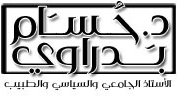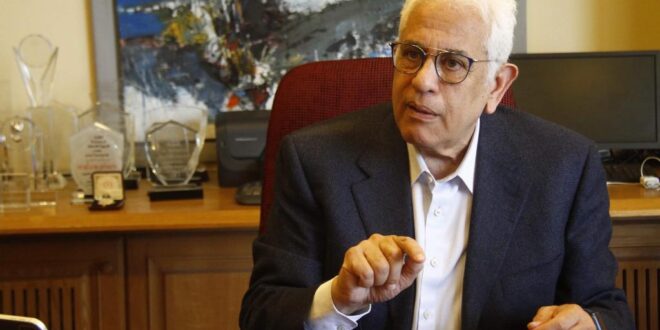The opportunity to rescue (6)
Education in religious institutions
Hossam Badrawi
The subject of religious education or that which is run by religious institutions is a sensitive subject and many avoid it.
The concept of religious education refers to many meanings:
– Religious education may mean education based on religious scientific institutions that start from the beginning of the ladder to its end.
– It may mean teaching religion in public schools, such as classes, lessons and lectures in schools and universities, accompanying the organized educational process.
– Or institutions with a religious character manage public education
– Or it may mean other aspects of education that take on a popular or charitable nature such as Quran memorization circles, the Bible and others.
Although we take into account all forms of education, we will focus on systematic religious education, that is, that type of education based in state institutions that are politically and culturally responsible and teach issues of religion and belief in an organized manner, or as curricula in civil education or manage educational institutions.
Pre-university religious education includes Al-Azhar pre-university institutes, in addition to specialized institutes such as teachers’ institutes, reading institutes, and kindergartens. This is in addition to the universities spread throughout the governorates, which are characterized by preventing the mixing of male and female students and not accepting non-Muslim students, even in universities that teach sciences such as medicine, engineering, and others. Religion enters the civil education system in four ways:
The first way: The presence of the Islamic (and Christian) religious education curriculum in all educational curricula, starting from the first grade of primary school, until the third grade of secondary school. In addition to the presence of many texts from the Qur’an and the hadiths of the Prophet in the Arabic language curricula at the various educational levels.
The second way: The presence of schools that are established from religious principles and confirm this in the names of these schools, most of which are private schools or affiliated with civil society organizations or affiliated with missionary missions. Although these schools adhere to the Ministry of Education’s plan in their programs, their names indicate the presence of a clear religious orientation in the vision adopted by those in charge of the affairs of these schools; These schools incite some activities and practices that aim to give students a certain religious tinge, and offer extracurricular activities that aim to directly or indirectly indoctrinate them with religion.
The third way: Teachers who adopt a purely religious approach in the educational process in public schools, and who impose their vision on students, or transmit to them practices that may not necessarily be related to the curricula (sometimes misinterpretations of religion, sometimes spreading superstitious thought, and sometimes extremism in opinion) by imposing the type of clothing or separating Muslims from Christians at other times.
The fourth way: Through Friday sermons, which are the largest platform for spreading religious culture, which the state should welcome only if it is within the framework of respecting the freedom to practice beliefs and respecting all religions and not focusing on specific stories that spread and confirm superstitions. This is followed by the lessons that follow the sermons in mosques and Sunday sermons in churches that are conducted without reviewing or approving their content seriously.. It is obvious that this type of education is considered unregulated education, and it is difficult to control the ideas presented through it, but it is a very important type due to its cumulative effect over the years on the masses of the people, especially its youth.. and it is presented weekly without interruption.
Traditional religious education was limited to males in the past, but contemporary data confirms that the space of females is expanding on the map of religious education.
Religious education with these extensions and expansions represents an education parallel to civil education, but these expansions are not accompanied by qualitative expansions in the type of programs offered to students or the means of presenting them. By drawing a graph of the increase in religious education, it becomes clear that by the year 2030 as the year of measurement, religious education will represent 14% of the total education in schools and more than 30% in university education.
The reality indicates that the expansion of religious education within the general civil education system is also possible if we look at the subject outside the scope of the prescribed religious curricula, but rather the ideology inherent in the educational process, its management, and in the minds of its supervisors, teachers, and educational models in the Arabic language and other curricula that deepen concepts that may not be compatible with the constitution, such as citizenship rights.
The philosophy of religious education in Al-Azhar institutes, especially at a young age, relies on memorization and indoctrination as a basis, which represents a philosophical challenge within the framework of the education trend away from this philosophy.
Neither in general nor in religious education is the fourth axis of the Education Vision 2030 achieved, and I mean building character, nor practicing arts and school sports, nor the digital climate emphasized by the country’s vision. Education in general, and religious education in general, suffers from the absence of decentralization and the low level of teachers and governance in school management.
Competition in education in Al-Azhar institutes among students may be less than in general education, as students know that there are places that accommodate them at Al-Azhar University, which may push them not to compete seriously and does not encourage them to compete, which is the fifth axis of the Education Vision 2030.
Adopting the general educational curricula in religious institutes, another academic burden is added to it, which is religious sciences – which burdens children – especially in the early years of life, with a burden that may not be compatible with their comprehension abilities at the specified age stage.
The expansion of Al-Azhar University with a number of students exceeds the ability of any educational institution to reach acceptable quality standards. (The vision is that the number of students should not exceed 50,000 students in a single university, whether religious or civil).
The trends of thought calling for reforming religious education can be classified into three directions:
The first: calls for besieging religious education and transforming the entire education system into a civil system.
Second: It calls for reforming religious curricula by transforming them into rational curricula based on creativity, dialogue and competition, not on rote memorization and indoctrination.
Third: Linking the reform of religious education to the reform of the educational system as a whole, starting with religious education curricula and the contents they contain that are incompatible with the constitution, development and focus on transactions, good morals, virtues and human values, passing through the teacher and his educational competence and academic level, the available educational means and their impact on the student, and ending with the societal system in general and the multiple entrances through which religious education leaks, which may appear legitimate on the surface, but may pass destructive thought on the other hand and undermine the students’ ability to acquire good knowledge.
We support the second and third approaches in dealing with religious education.
We believe that Al-Azhar (university and college) is distinguished by its accumulated religious experiences, expressing the true face of Islam, which is characterized by moderation and balance, which qualifies it to represent the major religious reference for Islam in the world, adopting the theory of the integration of civilizations, not their conflict. However, many curricula need to be reviewed because they contain ideas that may lead to extremism and support violence against those who are different and inequality between men and women. Religious education, like general education, must renew its quality standards in its institutions, and what is expected from its outputs, and that its experts and scholars, including its professors and imams, must determine these standards and indicators that must be used, and evaluate the performance of its institutions using the same scientific approach in order to achieve its declared goals. What we are proposing is not an intervention in its content, but in determining the policies that govern its quality, evaluation, and school hours in order to guarantee its quality and increase its positive impact on society and integrate other education systems with it..
We must look into dividing the academic burden of religious sciences on children in a manner that is consistent with their mental capacity at each age stage and determining what is required of the child at each educational stage, in terms of knowledge and skills, in a manner that is consistent with their age capabilities, and setting standard criteria for religious sciences.
It may be a sound suggestion to study increasing the years of education in Al-Azhar institutes, a full school year, so that the student can absorb the religious educational addition that the specialized scholars put in place, distributed over the years of study.
It is necessary to allow freedom of movement between the general and religious education systems, according to the announced criteria for that at each age stage.
It is necessary to transfer the accountability of religious education in parliament to the Education Committee instead of the Religious Committee, which is the situation that changed to this form during the rule of the Brotherhood, and has not changed after getting rid of them, which confirms that all education in the affiliated institutions is colored with a religious color and not a scientific educational color.
 Dr. Hossam Badrawi Official Website
Dr. Hossam Badrawi Official Website


